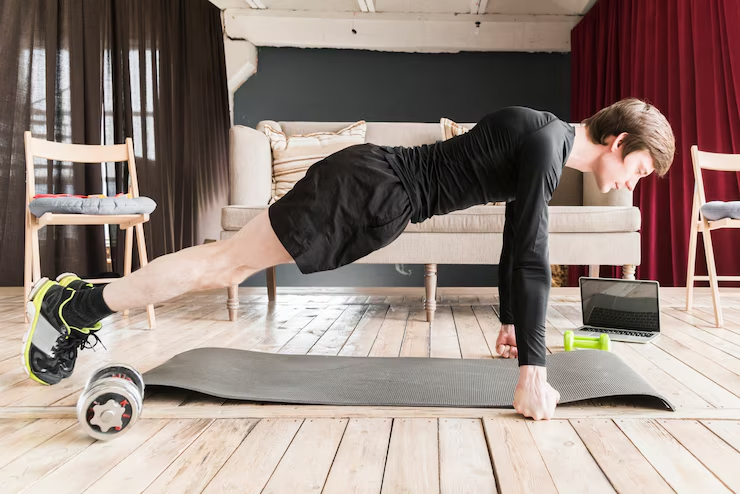What Are Gym Mats?
Gym mats are protective surfaces designed to make workouts safer and more comfortable. Whether you’re doing yoga, lifting weights, or stretching, gym mats provide a cushioned base that reduces stress on your body. Without them, exercises done on hard floors can lead to discomfort and even injury. These mats are made from different materials, including rubber, foam, or PVC. Also, they come in different shapes, thicknesses, and textures, depending on their purpose.
Why Gym Mats Matter for Every Workout
To start, gym mats prevent slipping during high-impact movements. For example, doing burpees or lunges on a hard, slick floor could result in falls or sprains. A quality gym mat gives traction and stability. Additionally, they serve as a barrier between you and dirt or germs that might be on the floor. Not only does this help keep your workout hygienic, but it also protects your gear and skin from scratches. In short, they are vital for comfort, cleanliness, and injury prevention.
Types of Gym Mats and Their Uses
There are several kinds of gym mats:
- Yoga Mats: These are thin and lightweight, offering just enough cushion for stretching and balance.
- Puzzle Mats: Also called interlocking foam mats, they’re often used for martial arts or home gyms.
- Exercise Mats: Thicker and softer, they’re best for floor routines like sit-ups and Pilates.
- Rubber Mats: Ideal for heavy lifting areas because they absorb impact from dropped weights.
- Roll-Out Mats: Great for covering larger areas; they’re easy to roll out and store away.
Choosing the right mat depends on your workout needs.
How to Pick the Right Gym Mat
When choosing a gym mat, consider the following factors:
- Purpose: Are you doing yoga, lifting weights, or bodyweight exercises? Each needs a different kind of mat.
- Size: A larger mat is good for full-body workouts, while a smaller one suits targeted movements.
- Material: Foam mats are softer and better for floor exercises. Rubber mats work well in weightlifting areas.
- Portability: If you need to move your mat often, choose one that is light and foldable.
- Thickness: Thicker mats provide more cushion but can be heavier.
Top Benefits of Using Gym Mats
Firstly, gym mats help in reducing joint strain. This is especially important for those with knee, hip, or back issues. Secondly, mats make long workout sessions more bearable by adding comfort. Thirdly, they create a designated workout area, which helps you stay focused and motivated. Moreover, using a mat can keep your house cleaner because it acts as a barrier between you and the floor.
How to Take Care of Your Gym Mats
To keep your gym mats in top condition:
- Clean them regularly with mild soap and a damp cloth.
- Let them dry completely to avoid mold or bad odors.
- Avoid harsh cleaners, as these can damage the surface.
- Store them flat or rolled up in a cool, dry area.
- Inspect for tears and replace if necessary.
Caring for your mat ensures it lasts longer and remains safe to use.
Where to Use Gym Mats at Home
Gym mats can be placed in your bedroom, garage, living room, or even outside on a patio. In fact, their flexibility makes them ideal for small or large spaces. For example, yoga mats are perfect for quiet morning stretches in the living room, while rubber mats suit garage gyms with heavy equipment.
Tips for Storing Gym Mats Properly
After use, always roll your mat with the clean side in. That way, the surface you work out on doesn’t touch the floor when stored. Use mat straps or a storage rack to keep it off the ground. Avoid folding thick mats, as this can lead to permanent creases.
How to Clean Different Types of Gym Mats
Cleaning methods vary by material:
- Foam mats: Wipe with a soft cloth using water and soap.
- Rubber mats: Use a mix of water and vinegar to disinfect.
- PVC mats: Use yoga mat sprays for quick cleans.
Always dry the mats completely before storing them.
Common Mistakes to Avoid with Gym Mats
Don’t leave mats in direct sunlight too long; this can cause fading and cracking. Avoid wearing shoes with hard soles, as they can tear the surface. Also, don’t skip cleaning. Sweat buildup can cause bacteria and unpleasant odors.
Gym Mats and Safety
Safety is the most critical reason to use gym mats. Whether you’re doing jumping jacks or bench presses, a good mat prevents slipping, reduces fall impact, and supports joints. This means fewer injuries and a more consistent workout routine.
How Often Should You Replace Gym Mats?
Most mats last one to two years with regular use. However, if the mat begins to thin out or loses its grip, it should be replaced. Watch for visible signs like cracks or peeling layers, especially on foam mats.
Gym Mats for Kids and Beginners
If you’re setting up a space for kids or beginner users, soft interlocking foam mats are best. They are gentle, easy to clean, and safe for all sorts of light movement. Plus, they add a colorful and fun touch to any room.
Eco-Friendly Options in Gym Mats
Some mats are made from natural rubber or recycled materials. These eco-conscious choices are great for both your health and the planet. Brands that avoid PVC or toxic chemicals often label their mats “eco-friendly.”
Gym Mats vs. Carpets for Exercise
While carpets seem soft, they can cause friction burns and may not offer the needed support. In contrast, gym mats are designed for movement. They’re easier to clean and more hygienic for regular workouts.
Conclusion
Gym mats are more than just floor padding—they’re your shield against injury, discomfort, and dirt. From yoga to powerlifting, they support every move you make. With proper care and smart selection, the right gym mat can completely transform your workouts, keeping you safe and motivated.

